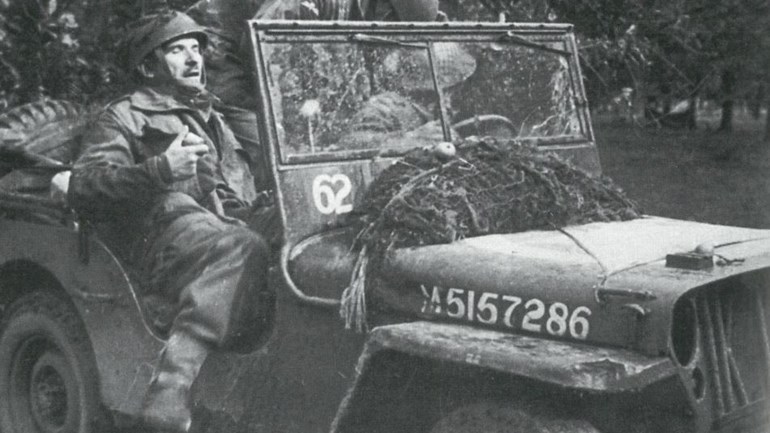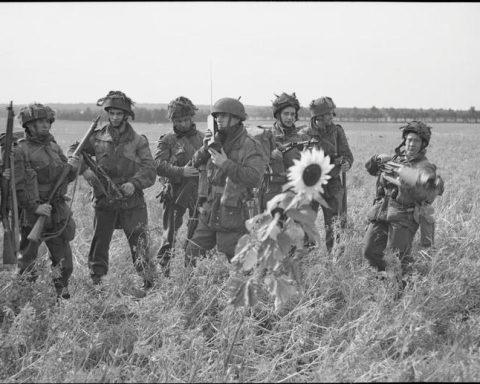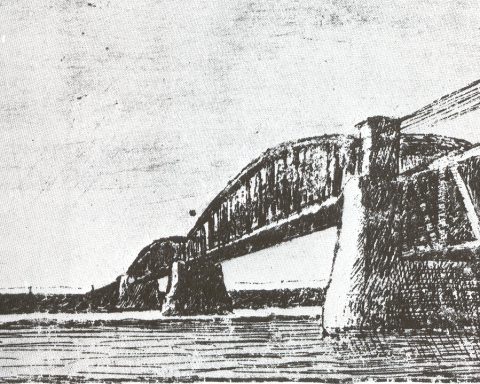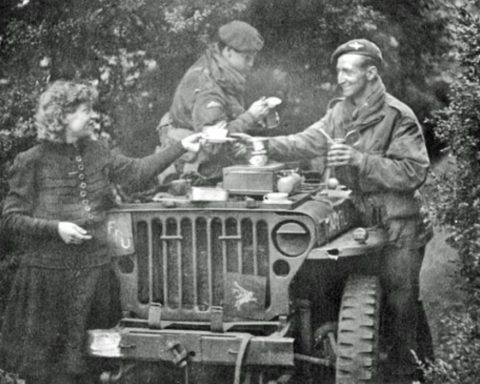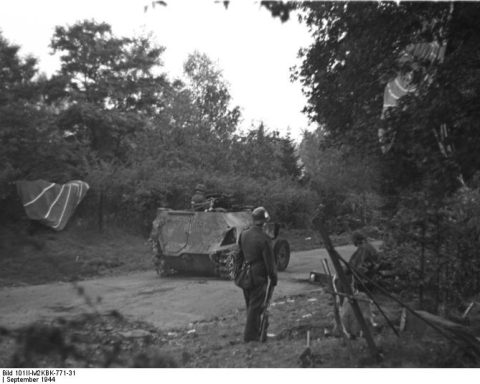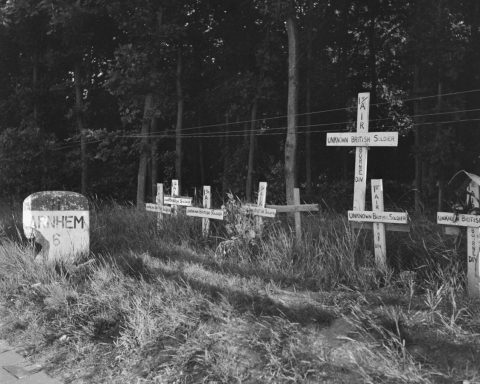After a few hours of sleep, Polish General Sosabowski was woken up on Sunday morning, September 24. Sosabowski had led the crossing of more than 150 Polish paratroopers to the British perimeter at Oosterbeek all night and had gone to bed around dawn.
But at 10 o’clock in the morning he was woken up because British General Horrocks, the commander of the ground forces, paid an unexpected visit to Driel. Horrocks was still determined to make Operation Market Garden a success and planned to launch an attack across the Rhine that night to relieve the British Airbornes in Oosterbeek.
However, he said nothing to Sosabowski about his plans. Together with the Polish general, Horrocks climbed the church tower in Driel. From there, Sosabowski pointed out the most important landmarks: the Westerbouwing, the landing place of the Driel ferry that was in German hands and to the east of it the bridgehead that the British Airborne Division had on the north side of the Rhine.
Horrocks didn’t say much, but instructed Sosabowski to come to Valburg that afternoon for consultation. An extensive and shocking report was made of this meeting, which became known as the ‘Valburg conference’, by the Polish lieutenant Jerzy Dyrda, who was present as an interpreter for Sosabowski.
Critic
General Stanislav Sosabowski was known as a difficult man. The British had great difficulty with the irascible Polish general. What made the relationship between the British and Sosabowski even worse was that Sosabowski had emerged as a major critic of the plans prior to Operation Market Garden.
According to Sosabowski, the British assumptions about German defense in the Market Garden plans were far too optimistic. The Polish general had repeatedly emphasized that the Germans were far from defeated and that after the airborne landings the Wehrmacht would do everything in its power to stop the Allied advance along the Dutch rivers.
Now that Operation Market Garden had been going on for a week and the Polish troublemaker had been right in all his warnings, the British were not about to admit they were wrong. Sosabowski was seen by the British generals more as an opponent than as an ally, as became clear during the Valburg conference.
Attack without boats
Immediately after Sosabowski’s arrival in Valburg it was clear that it would not be a nice meeting. In addition to General Horrocks, three generals, several brigadier generals and a few staff officers were present at the meeting. This included General Boy Browning, the commander of the airborne forces, and General Ivor Thomas, the commander of the 43rd Wessex Division.
Jerzy Dyrda: “It didn’t look like a meeting of officers of allied armies. It was more like a court-martial.”
On one side of the table sat all the British generals, dressed to the nines in uniform. On the other side of the table sat only General Sosabowski, in his battle dress. Lieutenant Dyrda was not allowed to sit next to Sosabowski, but had to stand behind his chair.
Dyrda: “The entire conference looked strange and unreal. On one side the judges, and opposite them alone the defendant.”
Horrocks opened the meeting by saying he planned to have two units cross the river one after the other that evening. The crossing would be commanded by General Thomas of the 43rd Wessex Division.
General Thomas then spoke and said that the units would cross the Rhine in boats at the Westerbouwing. The first attack was to be carried out by a battalion of the 4th Dorsets. The second attack would be made by the 1st Battalion of the Polish Parachute Brigade.
The rest of the Poles would cross a little further to the east at the place where they had already transferred 200 soldiers the previous nights. General Walton, commander of the 4th Dorsets was given command of the crossings.
After General Thomas’s speech there was silence. Then Sosabowski responded. Sosabowski ignored that command of the crossings had been given to a British commander lower in rank than himself. But he crisply told the British that he was the commander of the Polish Independent Parachute Brigade and that he would decide which battalion was chosen for a specific task.
General Horrocks is said to have replied: “You are under my command and you do what I say, damn it.”
Lieutenant Dyrda was dumbfounded by the plans for the river crossing.
“General Thomas did not provide information necessary to organize the crossings. There was no explanation of how many boats would come, of what type, how many soldiers would go in one boat, who would row them. Nothing about smoke screens. No word on whether there would be artillery support.”
Westerbouwing
Sosabowski informed the British generals on the other side of the table that he was not in favor of the crossing at the Westerbouwing. The German defense on this hill was strong and from the Westerbouwing the Germans had a clear field of fire across the river. Moreover, Sosabowski considered an attack by two battalions too light to be successful.
According to Sosabowski, there were two realistic options: either the British airbornes were withdrawn to the south of the Rhine, or a major attack took place by the entire 43rd Division and all Polish paratroopers further west behind the German lines instead of directly opposite them. the German troops.
After Sosabowski’s words, General Thomas stood up. Without responding to the Polish general’s words, he announced that the crossings would be carried out at 10 p.m., at the places he himself had mentioned.
Sosabowski exploded.
Without using his Polish interpreter, he addressed General Thomas in English. According to Lieutenant Dyrda, Sosabowski’s English improved as he became angrier.
“The crossing at the Driel ferry cannot be a success. It won’t help you at all. You will only sacrifice your soldiers. Moreover, a battalion will not change the situation.”
General Thomas tried to answer, but Sosabowski added angrily: “Remember that for eight days and nights not only Polish soldiers, but also the best sons of England have been dying senselessly.”
At that moment General Horrocks also stood up.
“This discussion is finished. The orders given by General Thomas will be carried out.”
Turning to Sosabowski, he added: “And if you, General, do not want to carry out the orders you have been given, we will find another commander for the Polish Parachute Brigade who will carry out our orders.”
Massacre
As Soabowski predicted, the attack opposite the Westerbouwing became a massacre. British historian Antony Beevor notes that General Horrocks wrote in his memoirs after World War II:
“Knowing what I know now, I think it would have been better if we had deployed the 43rd Division on a different line. I should have ordered General Thomas to execute a left hook across the Rhine, much further west. Then they could have attacked the Germans, who were fighting the 1st Airborne Division, from behind.”
Antony Beevor: “Horrocks seems to have forgotten that this was exactly the plan that Sosabowski had proposed.”

